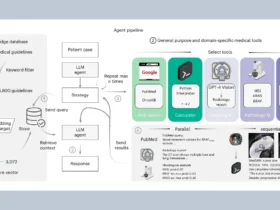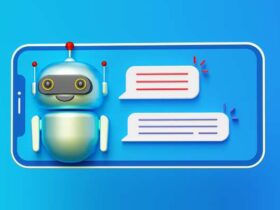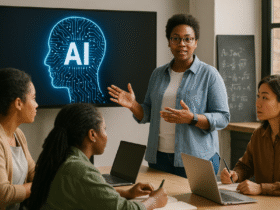Within this content, aicorr.com dives into an analysis of what is bias in AI.
Table of Contents:
AI Bias
AI bias refers to the tendency of artificial intelligence systems to produce skewed or unfair outcomes due to the influence of biased data or algorithms. This bias can manifest in various forms. And as such, leading to decisions or predictions that disproportionately affect certain groups or individuals. Based on factors such as race, gender, age, socioeconomic status, or other characteristics.
AI bias occurs when the data used to train machine learning models reflects existing societal biases. Or when the algorithms themselves reinforce or amplify these biases. These biased outcomes can have significant real-world consequences. Particularly when AI systems are used in sensitive areas like hiring, law enforcement, healthcare, and financial services.
What is AI Bias?
To best answer this question, let’s look at the different types of biases in AI.
Training Data Bias
This occurs when the data used to train an AI model is unrepresentative or skewed in some way. For example, if a facial recognition system is trained on images predominantly featuring light-skinned individuals, it may struggle to accurately identify people with darker skin tones. This happens because the model “learns” from the biased data and reflects those biases in its predictions.
Algorithmic Bias
Sometimes, the algorithms themselves can introduce bias. Even if the data has relative balance, certain algorithms may unintentionally favour one group over another. For instance, if a hiring algorithm’s design is to prioritise candidates with certain traits associated with past successful hires. As such, it may inadvertently favour candidates from a specific demographic if that demographic was historically overrepresented in the company.
Selection Bias
This form of bias arises when the data used to train an AI model is not fully representative of the broader population. For example, if a predictive policing system is trained on crime data from neighborhoods that are disproportionately policed. This in turn may predict higher crime rates in those areas, reinforcing the cycle of over-policing.
Interaction Bias
Interaction bias happens when users themselves introduce bias into AI systems through their interactions. A common example is when chatbots or virtual assistants learn inappropriate or biased responses from repeated interactions with users who intentionally feed them offensive or biased language.
Confirmation Bias
In some cases, AI models may amplify or reinforce existing biases by focusing on patterns that confirm pre-existing beliefs or stereotypes. For example, a news recommendation algorithm that continuously serves content aligned with a user’s past preferences . This may inadvertently reinforce a narrow worldview.
What Causes AI Bias
- Historical Bias – AI systems often inherit biases present in historical data. For example, if a company has historically hired fewer women for leadership positions. An AI-driven hiring system may learn from that data and continue to favor male candidates, perpetuating the imbalance.
- Imbalanced Datasets – If the training data is not diverse or balanced, the AI model may learn to make decisions that disproportionately favor certain groups. For example, if a medical AI system is trained primarily on data from young, healthy patients, it may not perform well when applied to older or more diverse populations.
- Inadequate Feature Selection – AI models rely on input features (data points) to make predictions. If the wrong features are selected or if features correlated with protected characteristics (like gender or race) are used, the model may inadvertently make biased decisions.
- Subjective Labelling – In some cases, the labels or categories used to train AI models may be influenced by human judgment or societal norms. This in turn can introduce bias. For instance, if people label images or classify data with their own biases, these biases get encoded into the model’s learning process.
Real-World Examples of AI Bias
An example of hiring algorithm. In 2018, it was revealed that a recruiting algorithm developed by a major tech company was biased against women. The algorithm had been trained on resumes submitted to the company over a decade, many of which came from men. As a result, the system learned to prioritise resumes that used male-associated terms and penalised those that indicated the applicant was female.
Furthermore, studies have shown that many facial recognition systems perform better on lighter-skinned individuals than on darker-skinned individuals. As such, leading to higher error rates for people of colour. This has raised concerns about the use of facial recognition in law enforcement, where inaccurate identification could have serious consequences.
AI-driven predictiv policing systems have been shown to disproportionately target minority neighborhoods. These systems are train on historical crime data, which can reflect and perpetuate biases in law enforcement practices. As a result, they may direct more police resources to areas that are already over-policed, reinforcing a cycle of discrimination. This is an example of predictive policing.
Furthermore, this is an instance of healthcare disparities. In healthcare, AI systems that predict patient outcomes have been found to prioritise the needs of wealthier, white patients over those of minority or lower-income groups. This bias arises when the training data fails to include a diverse range of patients. As such, leading to disparities in medical treatment recommendations.
What are the Consequences of AI Bias
- Discrimination: AI bias can lead to discriminatory outcomes, particularly in areas like hiring, lending, law enforcement, and healthcare. These biased decisions can reinforce existing inequalities and disproportionately affect vulnerable or marginalised groups.
- Loss of Trust: When AI systems are perceived as biased or unfair, it can erode public trust in these technologies. This can lead to resistance to the adoption of AI systems in critical areas. Areas such as healthcare, government services, and criminal justice.
- Legal and Ethical Issues: Organisatios that deploy biased AI systems may face legal repercussions. Particularly if their systems are found to violate anti-discrimination laws. Ethical concerns around fairness, accountability, and transparency in AI decision-making are also increasingly important for businesses and policymakers.
How to Mitigate AI Bias
Efforts to reduce AI bias involve both technical and ethical approaches.
Diverse Data
Ensuring that training datasets are diverse and representative of different groups can help mitigate bias. Collecting data from varied sources and making sure that underrepresented groups are include can improve model performance across demographics.
Bias Audits
Regularly auditing AI models for biased outcomes can help identify and address issues early in the development process. Tools and frameworks that focus on detecting bias can be use to assess the fairness of AI models.
Algorithmic Fairness
Researchers are developing fairness-aware algorithms that aim to reduce bias in decision-making. These algorithms aim to ensure that AI models treat different groups equitably and avoid reinforcing discriminatory patterns.
Human Oversight
The deployment of AI systems should always be with appropriate human oversight. This is to ensure that automated decisions can be reviewed and corrected when necessary. Human intervention can help prevent biased outcomes, especially in high-stakes areas like hiring or law enforcement.
Ethical AI Design
Incorporating ethical considerations into the AI design process is crucial for reducing bias. Organiations should prioritie fairness, accountability, and transparency when developing and deploying AI systems.












